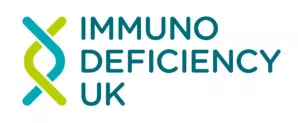Thymus Transplantation for congenital absence of the thymus (athymia)
The importance of the thymus gland
The thymus gland is an organ located in the upper chest, in front of the heart. The thymus gland is crucial for the normal development of specific white blood cells, called T-cells. Stem cells that are made in the bone marrow move to the thymus where they develop into working T cells that can help fight infection. T-cells are key players in the immune system and so the thymus plays a vital role in training the immune system to protect the body against the germs that surround us every day.
Congenital athymia and associated conditions
Children born without a thymus, are said to have congenital athymia. This leads to a form of severe combined immunodeficiency (SCID) with an absence of T cells and a high risk of life-threatening infections. There can be different genetic and environmental causes when children are born with congenital athymia. The most common of these is a condition called DiGeorge Syndrome (DGS). Children diagnosed with DGS typically have a small piece of chromosome 22 missing, so it can also be called 22q11 deletion syndrome. Children affected by DGS can experience problems affecting different health systems of the body and in a small number of children with DGS (around 1 in 100) athymia can occur, this is called complete DGS (cDGS). Another genetic disorder, CHARGE Syndrome, as well as poorly controlled diabetes in mothers during early pregnancy can also lead to a DGS picture and sometimes athymia. There are also a number of very rare causes associated with defects in other genes which are necessary for the development of the thymus gland. Examples of these genes are called FOXN1 and PAX1.
Role of SCID newborn screening programmes
Newborn screening programmes for SCID can pick up an absence of T cells in the blood and will detect athymia, as well as the more common defects of the bone marrow causing different types of SCID. However, unlike other SCID conditions, athymia cannot be corrected by bone marrow transplantation (BMT). Although mature T cells are transplanted during BMT, and there may be some clinical improvement from BMT in specific situations, for example, only when a fully matched family donor is available, the long-term immunity needed to fight infection can remain inadequate in children who don’t have a thymus. So, in most cases of athymia, the best approach is to perform a thymus transplant.
Thymus transplant and what is involved
Great Ormond Street Hospital for Children (GOSH) is one of only two centres in the world currently performing thymus transplantation and treats patients from all over Europe and further afield. The thymus tissue used for transplant comes from donations. When surgeons operate on infants with major heart defects some thymus tissue often has to be removed, and this can be donated, grown in the laboratory, and then transplanted. When children receive a thymus transplant, they receive the new thymus tissue from the healthy donor, which can grow safely in their body. This means the child’s own stem cells can travel from the bone marrow, to find the new thymus tissue and will spend time there developing into T cells, learning their new jobs and how to communicate with other immune cells. Over time working T-cells are produced which can begin to fight invading germs, recovering the child’s immune system function.
While children are waiting for thymus transplantation, it is important they are protected from infection. Children need to be kept in strict isolation. Some children are isolated at home with their family, others may need to stay in hospital if they have other health conditions which need attention. It is also important that children do not receive any vaccinations, as some vaccines contain live viruses which can be harmful for children with no T cells. All children will be given protective medications to help keep them free from infection and it is important that the medical teams from the referring hospitals communicate regularly with the thymus transplantation team. The development of the new T cell immunity is a slow process, taking several months after transplantation and these precautions will also need to be continued during this time.
During this time, the medical teams remain in close contact with one another and the clinical nurse specialist for thymus transplantation is available to the families to answers questions, provide updates and provide reassurance at times of uncertainty.
Complications associated with thymus transplants
There can be some complications after thymus transplantation. One of the roles of the thymus is to educate T cells not to react against the body’s own tissues but because the thymus tissue cannot be matched with the individual child this education is not always perfect and sometimes such reactions (called autoimmunity) can occur. This reaction mostly affects another gland, called the thyroid. In most cases the autoimmunity can be relatively easily treated with medication. At GOSH there is an active associated research programme aimed at understanding and reducing these complications.
To date more than sixty patients have received this treatment at GOSH and more than three quarters of them have done well, being able to stop taking their protective medications, socialise and attend school normally.
More information
More information about thymus transplantation can be found below:
- Caleb: The story of how and why children receive thymus transplantation for congenital athymia. This booklet was created with families, for families of children who will receive a thymus transplant at Great Ormond Street Hospital for Children.
To read more about congenital athymia, treatment and long-term outcomes follow these links:
- https://www.gosh.nhs.uk/search/?query=thymus
- Congenital Athymia: Unmet Needs and Practical Guidance – PubMed (nih.gov)
You can read the experiences of parents whose children have had a thymus transplantation for treating Complete DiGeorge Syndrome at the links below:





